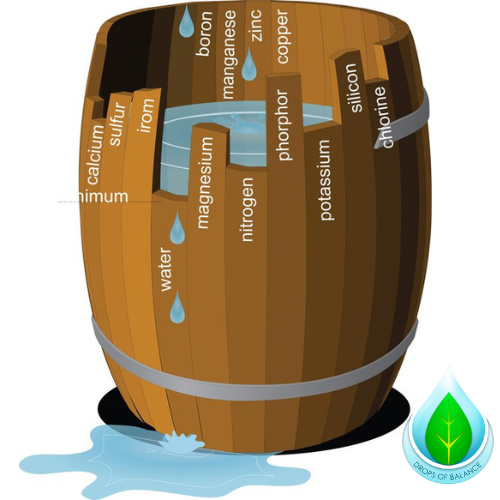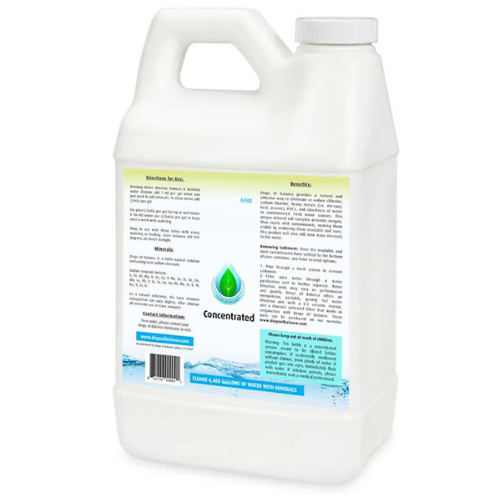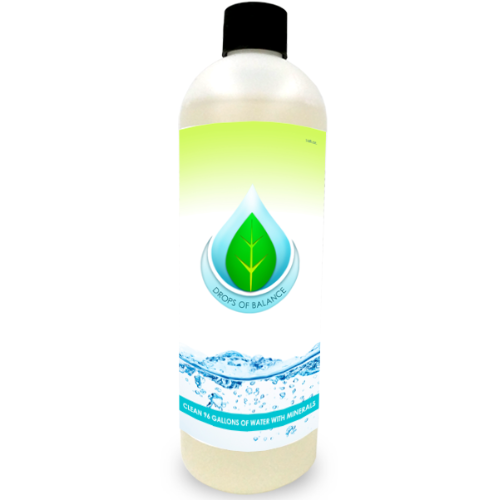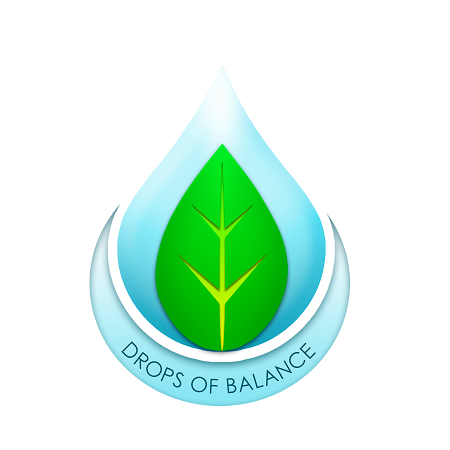
What Do Plants Need to Grow? The Hidden Truth About Trace Minerals That Garden Centers Don't Tell You
Walk into any garden center and you'll see shelves lined with fertilizers boasting their N-P-K ratios. Nitrogen for green growth. Phosphorus for strong roots. Potassium for disease resistance. But what about the other 13 essential minerals your plants desperately need?
Here's what they don't tell you: plants require 16 different mineral elements to survive and thrive. While nitrogen, phosphorus, and potassium grab all the attention, the remaining minerals play roles that far exceed their tiny quantities. Without them, your plants can't perform photosynthesis efficiently, fight off diseases, or produce the nutrient-dense fruits and vegetables you're hoping for.
The Complete Nutritional Picture
Plants need three fundamental elements from air and water, carbon, hydrogen, and oxygen, plus thirteen mineral elements from soil. These aren't optional extras. Every living plant cell requires access to this full range of minerals in sufficient quantities to function properly.
The mineral lineup breaks down into three categories:
Primary macronutrients: Nitrogen, phosphorus, potassium (the famous N-P-K) Secondary macronutrients: Calcium, magnesium, sulfur Micronutrients (trace minerals): Iron, zinc, manganese, copper, boron, molybdenum, chlorine
Some plants also benefit from cobalt, nickel, silicon, sodium, and vanadium. While carbon, hydrogen, oxygen, and nitrogen make up more than 95% of a plant's dry weight, those remaining minerals control virtually every biological process happening inside your plants.

Why Garden Centers Focus on N-P-K
Garden centers promote N-P-K ratios for good reason, these three nutrients get consumed in the largest quantities and often become depleted first. This focus makes business sense because these nutrients show visible, rapid results.
Nitrogen drives that lush green growth everyone wants to see. Phosphorus encourages blooming and strong root development. Potassium helps with protein synthesis and disease reduction. The effects are obvious and immediate, making them easy to market to eager gardeners.
But trace minerals work differently. They function like vitamins in the human body, needed in small amounts but absolutely critical for proper function. A trace mineral deficiency won't always show dramatic yellowing leaves like nitrogen deficiency does. Instead, you'll see subtle problems: weak stems, poor fruit development, increased susceptibility to pests and diseases.
The Hidden Power of Trace Minerals
Let's break down what each trace mineral actually does in your plants:
Iron forms the foundation for chlorophyll production. Without adequate iron, plants cannot perform photosynthesis efficiently. Your plants literally can't convert sunlight into energy properly.
Boron regulates nutrient absorption and proves essential for flower formation and pollination. It also controls nutrient movement within plant cells and helps plants absorb and use calcium properly. No boron means poor fruit set and weak cell walls.
Manganese functions within enzyme systems that break down carbohydrates and facilitate nitrogen metabolism. It's also crucial for protein production. Plants missing manganese can't properly process the nitrogen you're feeding them.
Copper supports reproductive growth, root metabolism, and protein utilization while playing important roles in photosynthesis and nitrogen fixation. It's particularly important for grain and seed production.
Zinc aids in multiple metabolic processes and is essential for growth hormone production. Zinc-deficient plants show stunted growth and poor fruit development.
Molybdenum proves essential for nitrogen fixation by bacteria in legume root nodules and for converting nitrogen compounds into forms plants can actually use.

The Secondary Macronutrients You're Probably Missing
Don't overlook the secondary macronutrients either. These get less attention than N-P-K but are just as important:
Magnesium forms part of the chlorophyll molecule in all green plants. It also activates many enzymes needed for growth. Without adequate magnesium, plants can't produce chlorophyll effectively, leading to yellowing between leaf veins.
Calcium provides structural integrity to plant cell walls and supports normal transport and retention of other elements. It also improves disease resistance by strengthening plant tissues. Calcium deficiency shows up as blossom end rot in tomatoes and tip burn in lettuce.
Sulfur drives protein and vitamin development while aiding chlorophyll formation. It also improves cold resistance and helps plants utilize nitrogen more efficiently. Sulfur-deficient plants often show yellowing similar to nitrogen deficiency but starting with younger leaves instead.
The Real-World Impact of Complete Mineral Nutrition
When you provide plants with complete mineral nutrition, the results go far beyond basic growth. Plants develop stronger stems, better structure, and increased resistance to pests and diseases. The benefits transfer directly to your harvest, fruits and vegetables contain more minerals and offer better flavor when grown in properly mineralized soil.
Here's the crucial connection: if minerals are missing from your soil, they're missing from the produce it yields. You are what you eat, and if your plants lack minerals, you cannot obtain those minerals from your food. This creates a nutritional gap that affects both plant health and human nutrition.
Plants grown with adequate trace minerals show:
- Stronger root systems
- Better drought tolerance
- Improved disease resistance
- Enhanced nutrient density in fruits and vegetables
- Better flavor and shelf life
- More efficient nutrient uptake

Why Your Soil Probably Lacks These Minerals
Modern agricultural practices have stripped many growing areas of their mineral diversity. Intensive farming, erosion, and over-reliance on synthetic fertilizers have depleted soils of trace minerals that took centuries to accumulate naturally.
Many soils naturally lack the secondary and trace minerals that plants need for healthy growth and productive yields. Even when present, minerals can become tied up in soil and unavailable to plants due to pH imbalances or chemical interactions.
Commercial fertilizers typically focus on replacing N-P-K because these nutrients are mobile in soil and get washed away easily. Trace minerals are often ignored because they're needed in smaller quantities and their deficiencies are less obvious in the short term.
Simple Solutions for Complete Plant Nutrition
The good news? Addressing mineral deficiencies isn't complicated. You have several options for remineralizing your soil and providing complete nutrition to your plants.
Rock dust and granite meal provide calcium, potassium, sodium, and other beneficial trace elements. A twice-yearly topdressing of about an inch, worked lightly into existing soil, can produce visible improvements.
Sea minerals contain a balanced spectrum of trace elements in naturally occurring ratios. These products often include over 30 different minerals that support healthy plant growth and boost beneficial microbial life in soil.
Liquid mineral supplements offer precise control over mineral delivery and can be applied through regular watering or as foliar sprays for rapid uptake.
The key is choosing products that provide the full spectrum of minerals rather than just addressing one or two deficiencies. Plants need all 13 soil-derived minerals working together for optimal health and productivity.
Water Quality Matters Too
Your water source affects mineral availability as much as your soil amendments. Municipal water often contains chlorine and fluoride that can interfere with beneficial soil microbes and plant uptake of certain minerals.
Well water might provide some minerals but could also contain excessive amounts of specific elements like iron or sulfur that can create imbalances.
Water treatment solutions that remove harmful chemicals while adding balanced trace minerals provide an ideal foundation for plant nutrition. This approach ensures your plants receive clean water enriched with the essential elements they need without the contaminants that can interfere with healthy growth.

Making the Switch to Complete Nutrition
Start by testing your soil to understand what minerals are available and what might be lacking. Many university extension services offer comprehensive soil testing that includes trace mineral analysis.
For immediate improvements, consider liquid mineral supplements that can provide rapid results while you work on long-term soil building. Products like Drops of Balance offer concentrated mineral solutions that can be used for both soil amendment and foliar feeding.
Focus on building soil biology through compost, organic matter, and mineral-rich amendments. Healthy soil microbes help make minerals available to plants and create the living ecosystem that supports complete nutrition.
The truth garden centers don't emphasize is simple: healthy plants need more than N-P-K. They need the complete spectrum of minerals working together to support every biological process from photosynthesis to fruit production. When you provide complete mineral nutrition, you're not just growing bigger plants: you're growing healthier, more nutritious food while building resilient gardens that can thrive for years to come.
Your plants have been trying to tell you they need more than basic fertilizer. It's time to listen and give them the complete nutrition they deserve.
